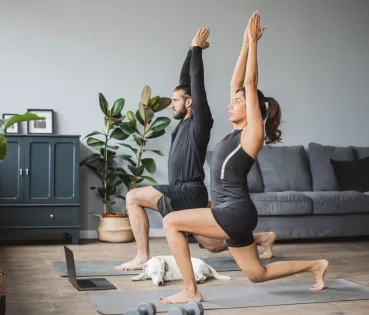
How the back works
The back fulfils four basic functions: holding the body upright, allowing movement, contributing to keeping the centre of gravity stable at rest and in movement and protecting the spinal cord.
Vertebrae. These are the bones of the spine; we have a total of 33 and they are used as an anchoring point for the muscles. They are highly resistant: each bone fragment can bear a weight of 9 tonnes.
Muscles. In ancient times it was believed that their role was limited to moving the spine. Today we know that they are also essential for generating the necessary tension for the spine to remain stable when it is still (like the rigging for a mast on a boat), and to maintain balance, compensating the variations in the centre of gravity that occur when we move. Any injury or overstrain can be very painful..
Ligaments. Along with the muscles, they act as cords that hold the bones that make up a joint.
Invertebral discs. There are 23 of these. They are found in between the cervical, thoracic and lumbar vertebrae and they act as a kind of shock absorber.
• Nucleus pulposus. The central part of the intervertebral disc has a gelatinous consistency.
- A healthy individual loses 2 cm of stature very day and recovers them at night. This occurs because when we have been standing or sitting for a long time the gelatin in the nucleus pulposus becomes shorter and becomes slightly deformed; on the other hand, when they are stretched, the compression on the disc is reduced.
- From the approximate age of 30 years onwards, we start losing stature. This is due to the fact that the nucleus pulposus becomes dehydrated and the disc loses height; a process, called disc degeneration or vertebral arthritis, which does not cause any pain.
- Ring. Fibrous disc covering that keeps the intervertebral disc in its place. When it breaks it causes a herniated or slipped disc.
QUESTIONS AND THEIR ANSWERS
We resolve questions about back care with help from the specialists at the Kovacs Back Unit.
Which type of mattress is best?
Quality clinical trials show that a medium mattress is the ideal. The mattress must be firm enough to remain flat and not lose its shape, as a hammock would. It must also be cushioned enough to adapt to the curves of the spine.
Is there an ideal pillow?
A pillow should help the cervical spine to be in line with the thoracic and lumbar spine, as it is when we are standing up. This is indicated by anatomical and laboratory studies in the absence of clinical trial showing the real effect. If you sleep on your back, you should do so with a relatively thin pillow that keeps the head in the same position as would be adopted if you were standing up. It is not advisable to sleep without a pillow, (as the neck would fall backwards), or with a very thick pillow (the neck would be bent). If you sleep on your side, you must do so in such a way that the pillow covers the distance from the shoulder to the neck, ensuring that the neck remains in line with the rest of the spine.
When should lumbar support belts be used?
Only in specific circumstances when we could not carry out any activity without using them (as could occur temporarily after a vertebral compression), or when we make an exceptionally intense effort (such as weightlifting). If they are used regularly they generate atrophy, loss of muscle tone and coordination. They should be used for as short a time as possible and only in exceptional circumstances.
Are cervical collars effective?
No. All the clinical trials carried out show that there is no sense behind treatment using cervical collars, even in patients who have had their necks operated on, since their use has not been shown to have any beneficial effect and they atrophy the muscles. This collar should not be confused with the immobilisation neck brace used when moving a person who has had an accident.
What is an NRT intervention?
Neuroflexotherapy consists in keeping some nerve fibres persistently stimulated which, when they have been activated are capable of counteracting the mechanisms that maintain the pain, inflammation and muscle contracture in subacute and chronic cases of neck and back pain. To maintain this persistent stimulation a surgical material is implanted on the surface (surgical staples) that is extracted after 90 days. The intervention takes place in the outpatients department and does not require anaesthesia and it is indicated for patients where the pain has lasted for 14 days or more and reaches 3 or above on a scale where “0” means “absence of pain” and 10 “the most intense pain imaginable.”





